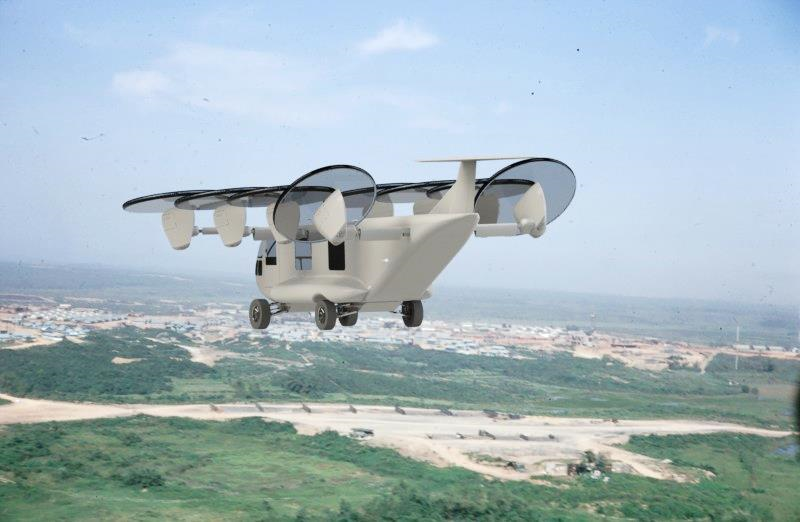When someone mentions flying cars it conjures up images of a sporty little number that takes to the air like something out of the Jetsons. But what about one that’s a cross between a 4x4, an octocopter, and a Blackhawk helicopter? That’s what Advanced Tactics of El Segundo, California is seeing with its ambitions to produce a roadable VTOL aircraft capable of unmanned autonomous operations as a more flexible way to recover casualties, move supplies, and support special forces.
Medivac operations have revolutionized casualty evacuation. The ability to airlift wounded soldiers direct from the battlefield to a surgical unit within the "golden hour" between injury and treatment dramatically increases the chances of survival. The trouble is, helicopters can only land in nice, big open areas that can be miles from where they're needed.
That’s where the AT Black Knight Transformer comes in. It’s billed as the world’s first roadable vertical takeoff and landing (VTOL) aircraft that’s capable of landing close to where it's needed, then driving the rest of the way. It’s seen as an economical aerial ambulance or cargo transporter to serve soldiers in the field with an interior volume comparable to a Blackhawk helicopter.

When the AT Black Knight Transformer is operational, it will be a streamlined aircraft with turbo diesel engines capable of handling 1,000 lb (453 kg) or five passengers with a 250 nautical mile (463 km) range at 130 knots (241 km/h). On the ground, it will be able to haul 1,600 lb (726 kg) or eight passengers and manage 70 mph (over 110 km/h).
That, however, is in the future. For the moment, Advanced Tactics says that a full-scale technology demonstrator completed its first driving tests last month, and that the first flights are scheduled for early this year.
The AT Transformer vehicle technology is based on combining the capabilities of a multi-rotor helicopter with those of a motor car. According to the company, the idea is to produce a vehicle that is not only simple and robust with a highly modular design, but also one that is capable of autonomous, unmanned operation to avoid risking the life of a pilot. The engines are a direct drive connection to prop rotors with off-the-shelf components wherever possible set in a modular, field-replaceable configuration.
The design of the rotors is based on that of the multi-rotor helicopters that have become so popular with hobbyists.These provide a simple, stable configuration without the need for tail rotors or complex linkages with stability and control provided by a high-speed computerized feedback control system. In addition, the system allows for controlled engine-out flight in the event of an emergency.
On the ground, the engine modules fold against the body of the vehicle to provide a street-legal width and each module can be replaced by two people. Also, the payload bay can be swapped out to accommodate different missions. There’s an automotive suspension and drive train with large truck tires.

According to Advanced Tactics, the Black Knight was developed using an iterative prototype process starting with small electric machines and working on up the scale. In 2012, the company began work on the AT Panther Transformer, which is a smaller vehicle designed for special forces work and is sized to fit in the payload bay of a CV-22 Osprey.
Source: Advanced Tactics












